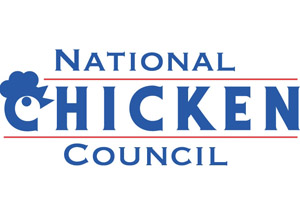Salmonella on poultry a ‘common enemy’

The United States and Denmark are at war. Not against each other, but against a common enemy – Salmonella on poultry products.
“Recently, there has been attention in the media about Denmark’s attempts to eradicate Salmonella from its poultry supply. Like Denmark, the US poultry industry and the federal government recognise that Salmonella is a very serious issue and we use the best science, data and technologies available to protect public health,” comments Mike Brown, president of the National Chicken Council in the US.
In an article originally written for Feed Safety News, Brown wrote, “like Denmark, the US poultry industry and federal agencies are waging this war on multiple fronts by taking a comprehensive approach to food safety, attacking Salmonella in breeder flocks, poultry farms, chicken feed and processing facilities. There are many battle tactics commonly deployed in each country to wage our respective wars on Salmonella, including vaccination programs, feeding probiotics, heat treatment of feed, biosecurity measures and rodent and insect control on the farms.
“But there are different challenges here in the US and in Denmark, too. An important caveat is that not all Salmonella are pathogenic to humans, and the methods of measuring Salmonella prevalence cannot be trusted as equivalent between countries. Denmark, roughly the size of the state of Maryland, raises and processes about 100 million chickens per year. In the US, Georgia alone processes 100 million chickens in about 20 days.
“So, while we’re fighting the same enemy, we’re fighting against different-sized armies. Here, we’re fighting against potential Salmonella in an army of about 8.6 billion chickens; Denmark is fighting against potential Salmonella in an army of about 100 million. We’re also feeding 308 million more people. That is perspective, not an excuse.
“Another difference is that we do not eradicate billions of live chickens because they might carry Salmonella, a naturally occurring microorganism that is inherent to the bird. What will make Salmonella disappear is science, research and breaking the chain at every stage of production from the breeder farm to the processing plant.
“US chicken companies recognize that constant vigilance and continuous improvement in food safety is a requirement of doing business. The risk of doing any less is too great to consumers and to the company’s reputation. Each company has stringent food safety and quality assurance programs that complement federal government inspection.
“It all starts even before the egg. Healthy breeder flocks lead to healthy chicks — measures are taken to prevent diseases from passing from hen to chick and to ensure that natural antibodies are passed on which help keep the birds healthy. At the hatchery, strict sanitation measures and appropriate vaccinations ensure the chicks are off to a healthy start.
US chicken producers also focus heavily on the further reduction of Salmonella at processing facilities by using safe and effective interventions at critical control points.
“At facilities that process chickens for meat, the US Department of Agriculture’s Food Safety and Inspection Service (FSIS) requires that poultry establishments must meet Salmonella performance standards as a means of verifying that production systems are effective in controlling any and all contamination. FSIS inspection personnel conduct Salmonella testing in poultry establishments to verify compliance with Salmonella standards.
“Since 1996, meat and poultry processors have been operating under Hazard Analysis Critical Control Points (HACCP) plans, which have provided a scientific method of identifying and preventing food safety hazards and managing risk so that key actions can be taken to reduce or eliminate these risks.
“Chicken-processing facilities use a variety of intervention strategies at their critical control points that include the use of FDA-approved organic sprays and rinses that kill or reduce the growth of potential foodborne pathogens, biosecurity measures, zero tolerance for visible fecal material, making sure the carcass is properly chilled, and strict sanitation procedures, to name a few.
“Microbiological tests for pathogens, including Salmonella and Campylobacter, are then conducted by companies and federal laboratories. These tests help ensure that food safety systems such as HACCP are working properly and they verify compliance with federal Salmonella standards.
“The data tell us we’re making progress: From 2001 to 2010 — the latest 10-year period for which data are available — outbreaks related to E. coli, Salmonella and other pathogens decreased by more than 40%. In the past five years, Salmonella on whole chickens has decreased by 55%. According to the latest FSIS Quarterly Progress Report (July 1 through Sept. 30, 2013), 0.7% of young chicken carcasses in large plants tested positive for Salmonella — a fraction of the FSIS performance standard of 7.5%.
“The incidence of human salmonellosis (from all sources) in the U.S. in 2012 was 16.42 cases per 100,000 people. Denmark’s rate was 21.4 cases per 100,000 for the same year.
“We know most consumers eat chicken parts rather than whole chickens. We are collectively and non-competitively exploring all options to reduce contamination on chicken parts in order to provide the safest product possible to our consumers. This something the industry is proactively working to address, so when a performance standard for chicken parts is put in place by FSIS, the industry can be meeting or exceeding the standard, as we currently do for whole carcasses.
“Secondly, USDA needs to move forward to modernize its poultry inspection system that hasn’t changed since the days of Dwight Eisenhower. Under this proposal, the amount of food safety-related tasks performed by USDA inspectors would significantly increase, preventing more than 5,200 foodborne illnesses every year, according to USDA risk assessments.”













